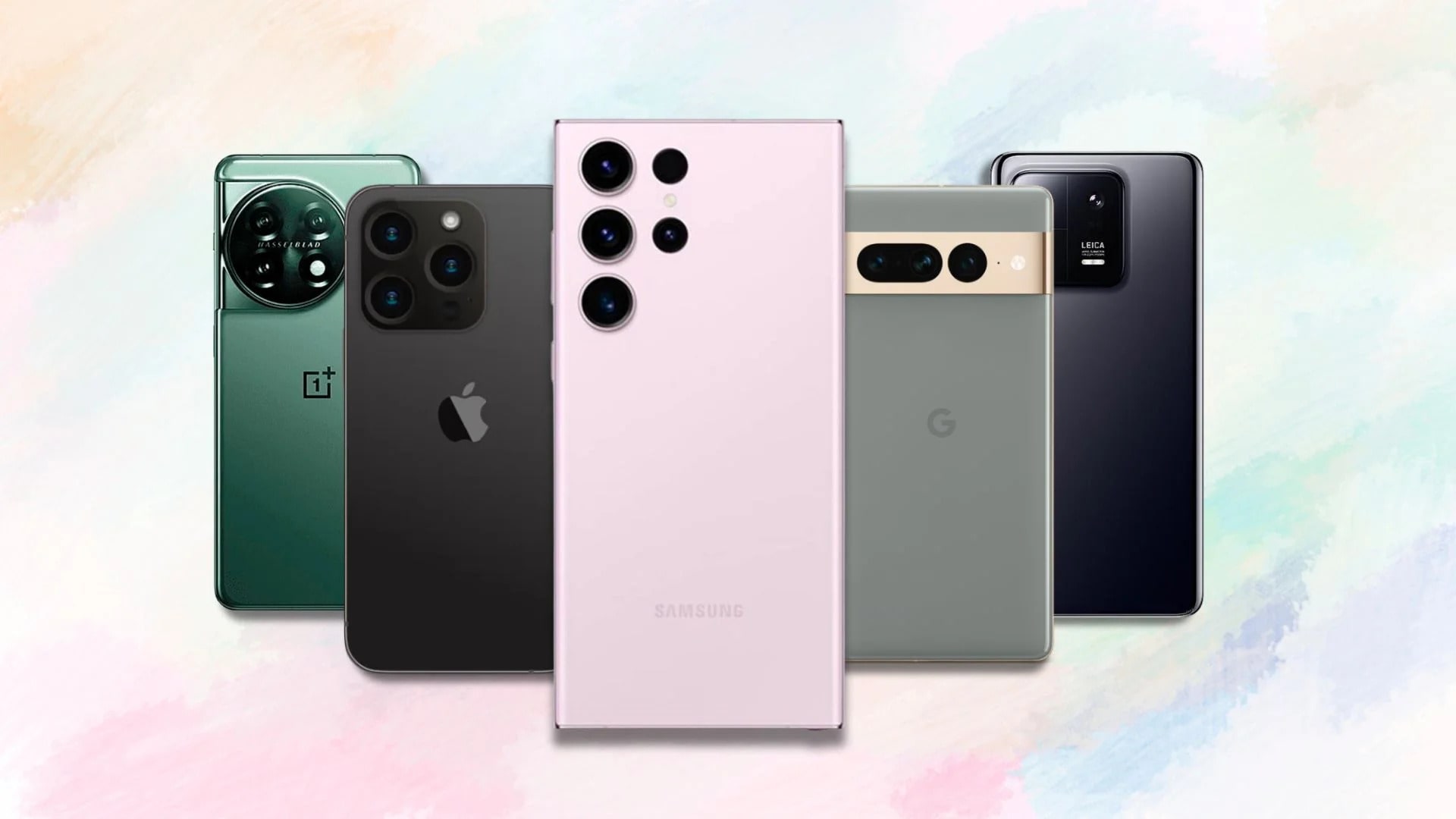Greetings from the communication of the future! It is now essential to keep connected in today’s fast-paced digital world. Also, we now have access to 5G networks, which are blazingly fast and have the potential to transform communication because of inventive technological breakthroughs completely. But what would happen if you could not pay for a smartphone or internet access? This is the situation with the free 5G government phones.
These fantastic, state-of-the-art devices are given away free to those who qualify and most need them. Curious? Let’s explore everything there is to know about free 5G government phones and how they can improve your internet speed!
Contents
What Are Free 5G Government Phones?
In terms of telecoms, free 5G ministry phones are revolutionary. These gadgets ensure people can stay connected without going over budget by giving those with qualifying circumstances and limited financial resources access to current technology.
With its cutting-edge 5G capabilities, a free 5G ministry phone is no ordinary gadget—it allows users to enjoy unbelievably fast internet rates. This advanced network technology will enable you to stream high-definition videos without lag or buffering, quickly download huge files, and take advantage of lag-free, crystal-clear video calls.
In addition, these phones frequently have pre-installed apps for social media, email, and GPS navigation, which let users stay in touch with friends and family and stay updated on news and current affairs.
You must fulfill specific requirements set by the ministry program that provides these phones to qualify for a free 5G ministry phone. This usually entails being low-income or participating in particular assistance programs like the Supplemental Nutrition Assistance Program (SNAP) or Medicaid.
For people who might not otherwise be able to buy pricey cell phones or data connections, a free 5G ministry phone opens up a world of possibilities. It puts essential services like job openings via online applications, emergency hotlines, student learning materials, and healthcare information portals at their fingertips!
Check to see if you qualify for a free 5G government phone immediately if you could benefit from remaining connected but find it difficult because of budgetary limitations or other qualifying circumstances! It could be the answer that advances your connectivity experience!
Who Qualifies for a Free 5G Government Phone?
Who qualifies for a free 5G government phone? This is an important question that many people have when considering whether they are eligible for this program. The good news is that specific criteria are in place to determine eligibility.
First, those enrolled in particular government aid programs can be eligible for a complimentary 5G government phone. These include Medicaid, Supplemental Security Income, Federal Public Housing Assistance, and SNAP (Supplemental Nutrition Assistance Programme).
The amount of money also has an impact on eligibility. Generally speaking, free 5G government phones may be available to anyone below the federal poverty level. The precise income thresholds differ based on the state in which you live.
It’s also important to remember that several states have Lifeline Assistance programs, which let low-income citizens get cell phone service for free or at a steep discount. Specific programs may have slightly different eligibility requirements than the national Lifeline program.
Let’s say you meet specific income requirements or qualify for government aid. If so, you can get a free 5G public phone. Before applying, please verify your eligibility by visiting the official Lifeline website or contacting your local service provider.
How to Get a Free 5G Government Phone Application
The process of requesting a free 5G government phone is easy. Finding a participating supplier is the first step in the process. Typically, these providers are well-known wireless carriers or companies that offer reasonably priced phone services to low-income consumers.
Once you have selected a supplier, visit their website or contact them via phone to learn more about the application process. You will liken them with specific basic details, such as evidence of income or enrollment in any particular government assistance program.
Usually, you can apply by mail or online. Certain providers may also offer physical locations. You can use them in person if that makes things more manageable and easier for you.
Following submission, the supplier will review the application to ascertain your eligibility. Depending on the specific source, this process can take a few days to many weeks.
In addition to any extra perks and services, should you be approved for the program, you will receive your complimentary 5G government phone. You should be aware that these phones have monthly data and minute caps, even though they can be raised with other plans if necessary.
Families and individuals who qualify can apply for a free 5G government phone to stay connected for a fair price. So, don’t hesitate to use this fantastic resource immediately!
Advantages of Obtaining a Free 5G Public Phone
Enhanced Connectivity: You may take advantage of seamless connectivity and blazing-fast internet speeds with a free 5G government phone. With 5G technology, you can be confident that your internet experience is uninterrupted and seamless, whether downloading files, streaming films, or browsing the web.
Affordable Communication: The ability to save money is one of the main benefits of receiving a free 5G government phone. The government offers these phones to qualified people who otherwise would not be able to purchase a smartphone. These gadgets provide inexpensive connectivity for low-income people by doing away with the requirement for costly monthly contracts or upfront smartphone purchases.
Access to Essential Services: A complimentary 5G ministry phone provides numerous opportunities to utilize essential services, such as job search engines, medical care, and education. With telehealth services, people may easily schedule doctor’s appointments and take part in online courses from any location with high-speed internet.
Situations involving emergencies: In situations involving emergencies or unforeseen events where timely communication is crucial, a trustworthy smartphone becomes indispensable. Customers can quickly contact for assistance in an accident or a natural disaster using a free 5G ministry phone.
In summary, a free 5G ministry phone offers better coverage, affordable communication choices, convenient access to critical services, and ease of use in an emergency.
With these advantages, it’s an invaluable instrument that can dramatically raise the standard of living for those who satisfy the criteria.
Possible Limitations and Restrictions
For those who qualify, free 5G ministry phones are a huge benefit, but it’s essential to be aware of any potential limitations and restrictions that may apply to these devices. Here are some points to consider:
Limited Coverage: 5G technology offers faster internet, but its coverage is still expanding. This suggests that in specific locations, particularly remote or rural ones, 5G network coverage may be patchy or nonexistent.
Data Caps: Many free administration phone plans include a monthly cap on the data you may use. If you surpass this cap, your internet speed can be lowered until the start of the following billing cycle.
Device variety: The variety of free administration phones may be limited compared to other phones on the market. The latest smartphone models and functionalities might be inaccessible to you.
To be eligible for a free 5G ministry phone, you must meet specific eligibility conditions set by the program provider or participating agency. Evidence of low income or participation in a specialized assistance program is often required to meet these requirements.
Get the free 5G ministry phone you deserve by carefully reading and understanding all the terms and restrictions before applying. Ignoring these potential drawbacks, they offer a crucial lifeline for individuals needing contact and connectivity.
Comparison with Other Low-Income Phone Programs
There are a few options for low-income phone programs besides free 5G ministry phones. Many people know Lifeline, a program that provides qualifying individuals with free or highly inexpensive phone service. Even though both programs seek to give low-income individuals access to affordable communication options, there are some significant variations between them.
The service type is where the modifications stand out the most. Citizens may use cutting-edge technology and lightning-fast 5G networks with free 5G ministry phones, enabling faster downloads and more effective online browsing. However, Lifeline usually provides less expensive mobile phone plans with fewer amenities and slower internet access.
The eligibility standards should rank among the most crucial factors. One must meet certain income limits or be engaged in specific assistance programs, such as Medicaid or SNAP, to be eligible for a free 5G ministry phone. Lifeline contains income-based constraints in addition to any applicable state-specific restrictions.
Under both programs, low-income individuals can find affordable solutions; nevertheless, the extent of coverage varies depending on one’s residence and accessibility to healthcare. Some programs may provide more extensive coverage in some areas compared to others.
Personalized preferences and needs inform the selection of these budget-friendly phone contracts. Lifeline services may be more attractive to those who prioritize saving money. Still, free 5G ministry phones may be more attractive to those who need faster connections and cutting-edge technology.
The free 5G ministry phones and other low-income phone plans have advantages and disadvantages. Clients must undergo a comprehensive requirements assessment before deciding which program is best for them.
Conclusion
In today’s fast-paced digital world, having a dependable phone is no longer a luxury but a need. Free 5G ministry phones can help those in need connect to opportunities and assistance.
These phones allow those on a limited budget to stay in touch with loved ones, conduct exciting research, seek medical care, and even apply for jobs. 5G users can connect and interact online at previously unheard-of rates.
A free 5G ministry phone is contingent upon an individual meeting specific requirements set forth by the Lifeline Assistance program. Certain income conditions must be met to be eligible, such as having a household income less than or equal to the federal poverty level or being enrolled in Medicaid or SNAP. The application process is simple and can be done online or with approved providers.
Obtaining a free 5G ministry phone has advantages, such as lower monthly service plans and better technology, but there can also be constraints and limitations. Data caps and restrictions on international phone calls are two of these constraints. Before registering, prospective beneficiaries must carefully read the terms and conditions.
Unlike other low-income phone programs, the ministry’s free 5G phones provide qualifying individuals with cutting-edge technology without breaking the bank. 5G connectivity gives consumers additional options for speed and usefulness, but other attempts can provide entry-level phones with fewer features.
Thus, to recap,
Free 5G ministry phones could help those needing high-speed connectivity without a large initial cash outlay. These devices close the digital divide by guaranteeing everyone can use the communication tools required for daily living.
These programs are crucial to building a society where everyone can keep up with the quick speed of technological progress.










